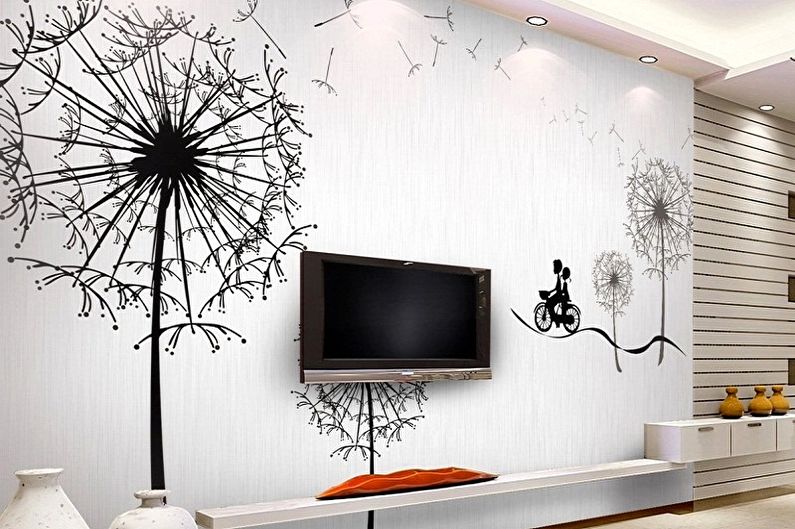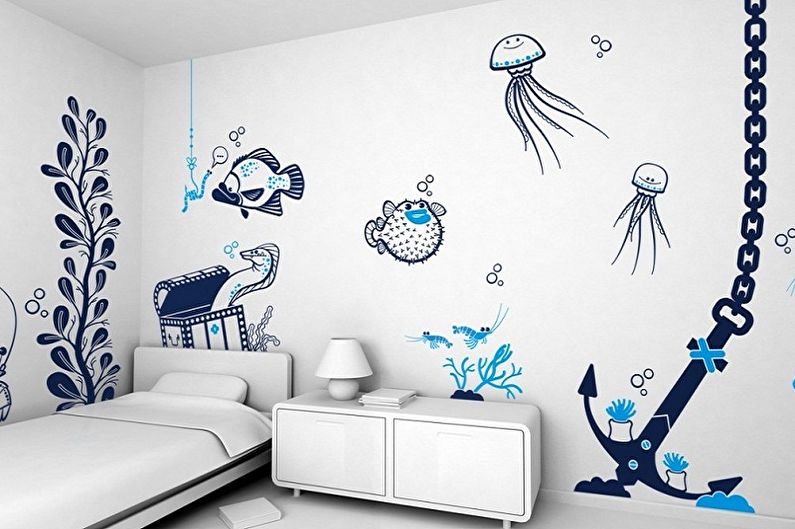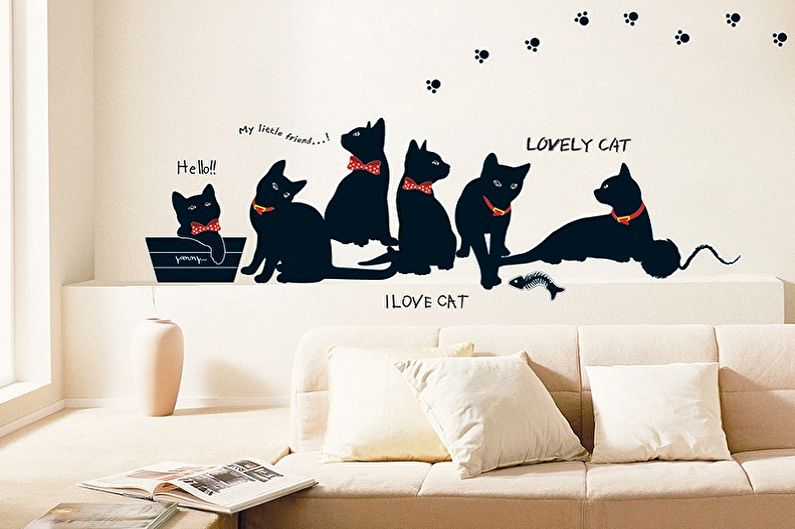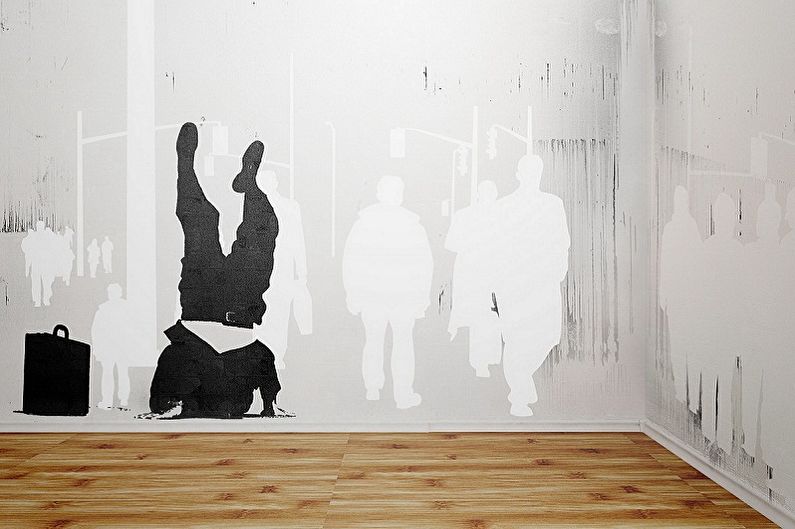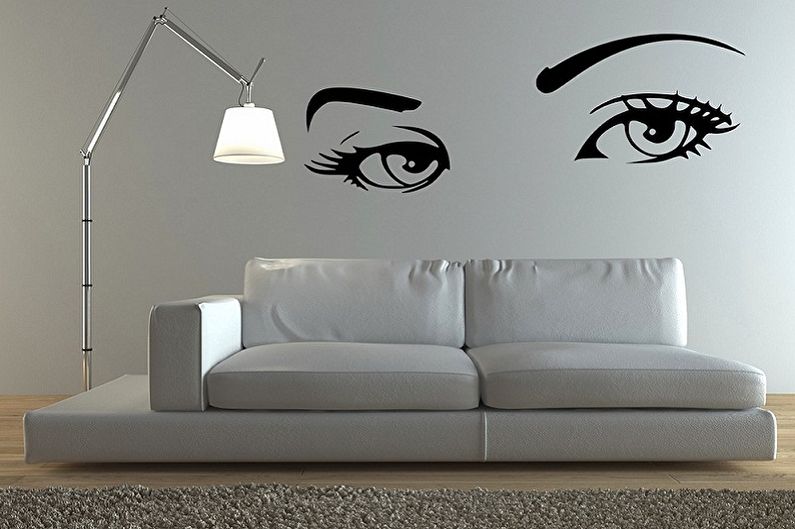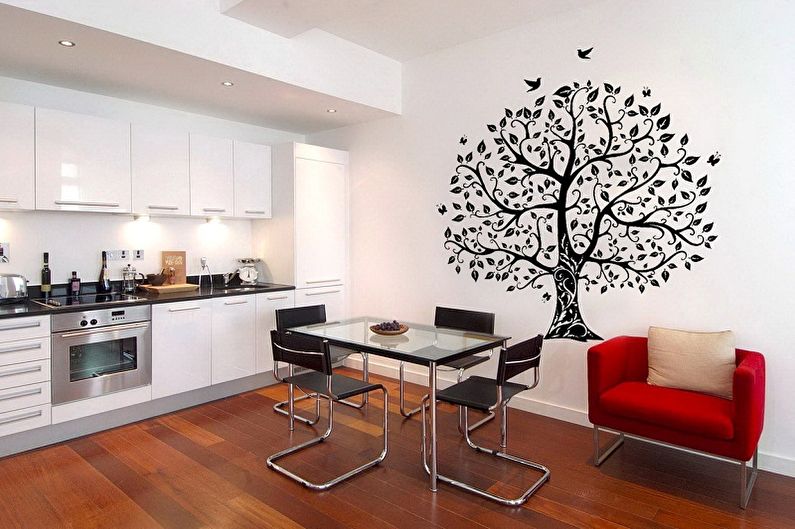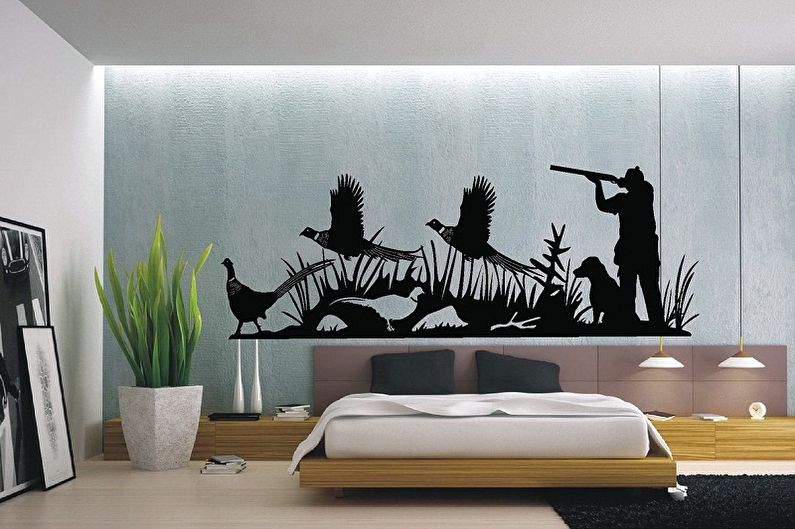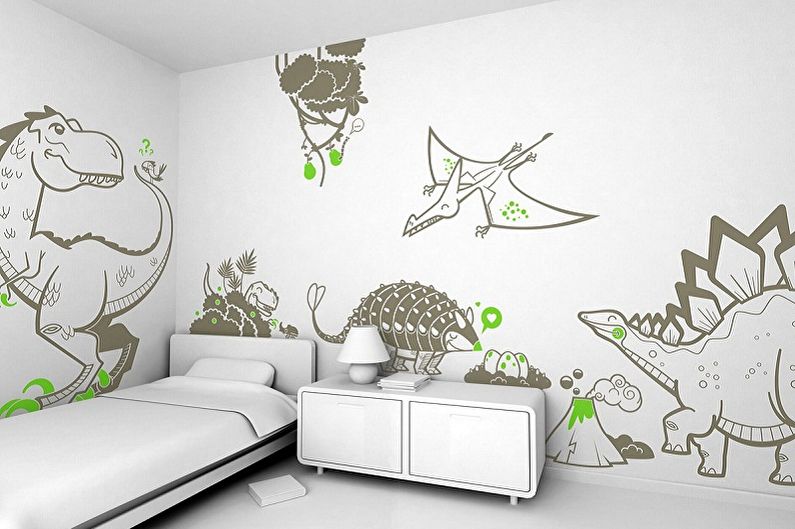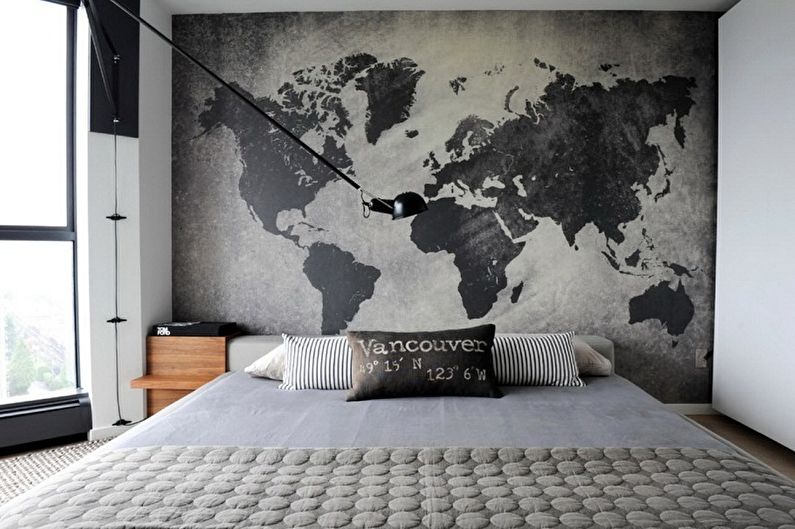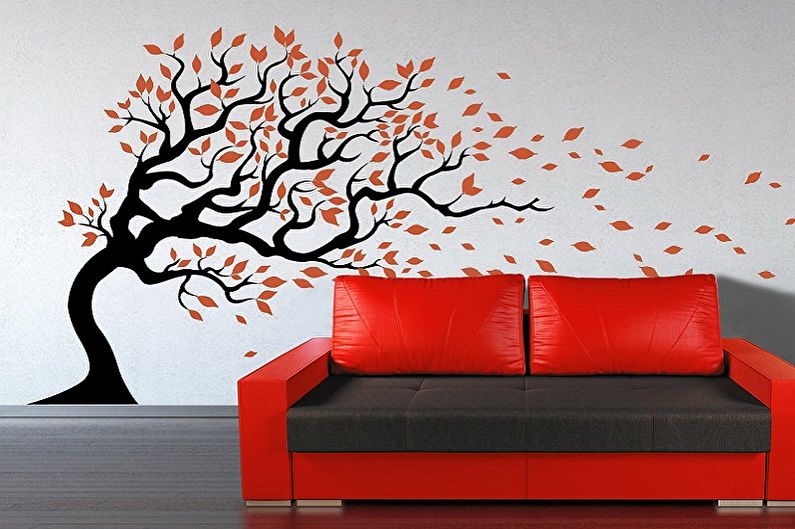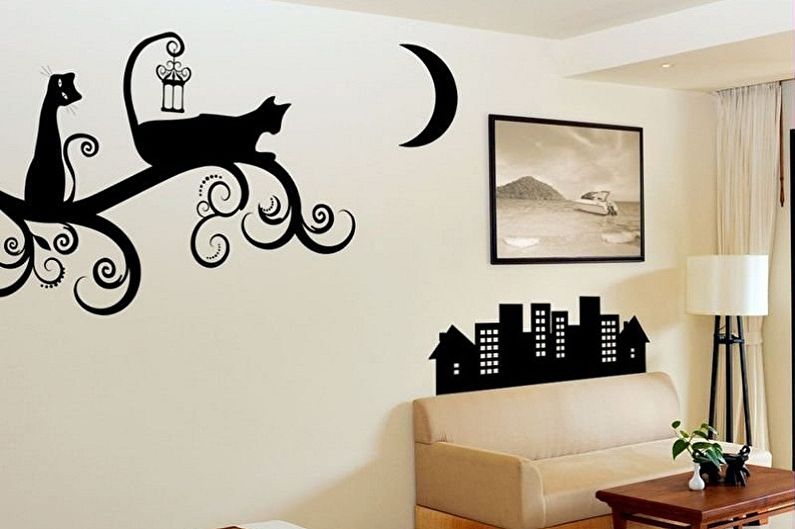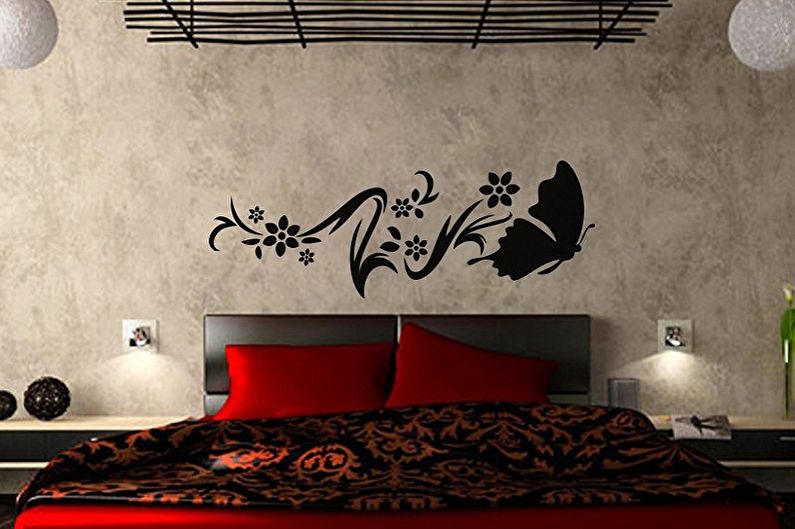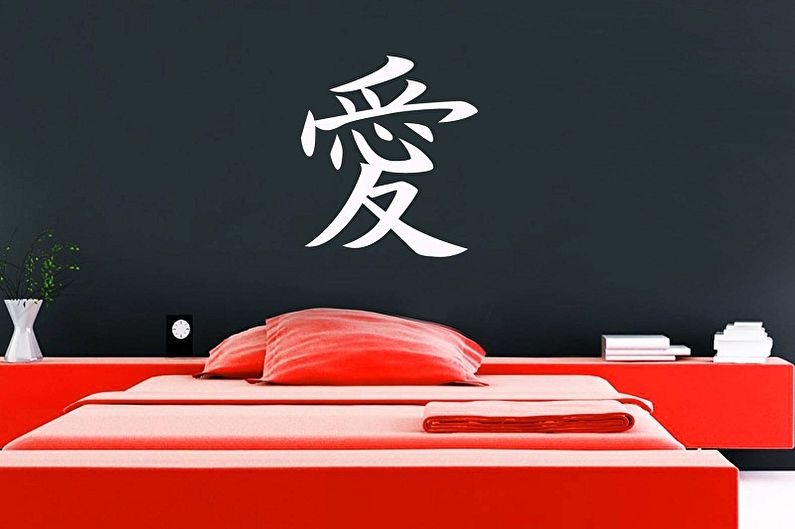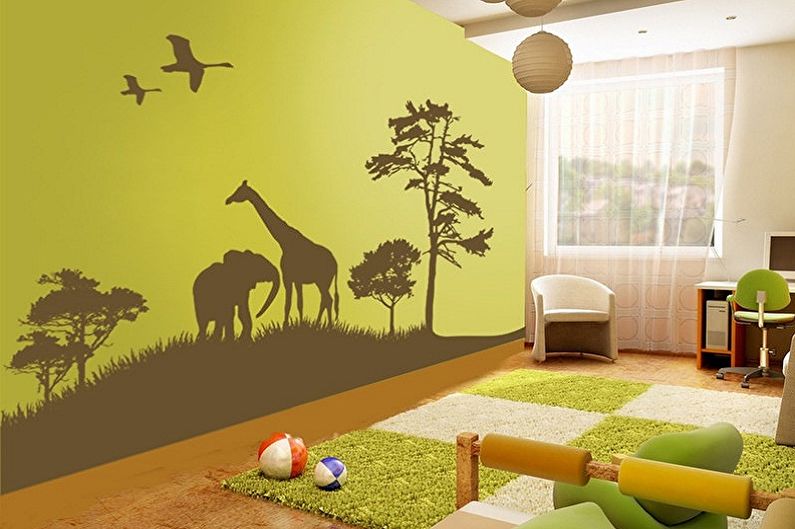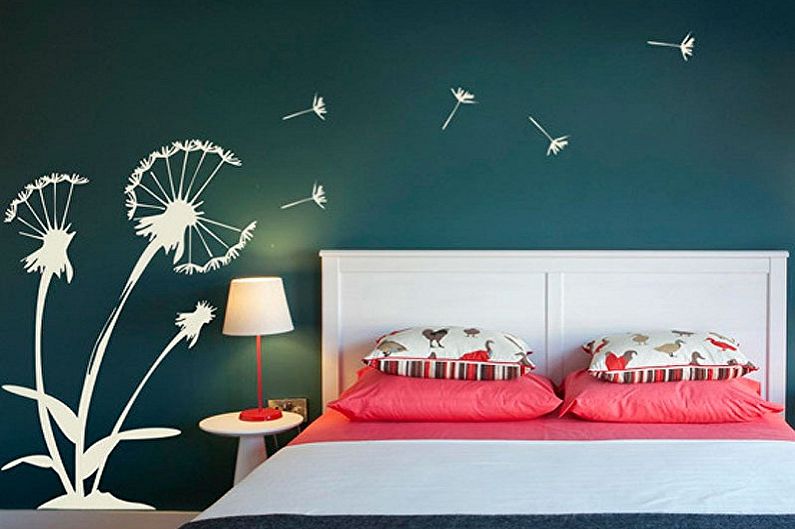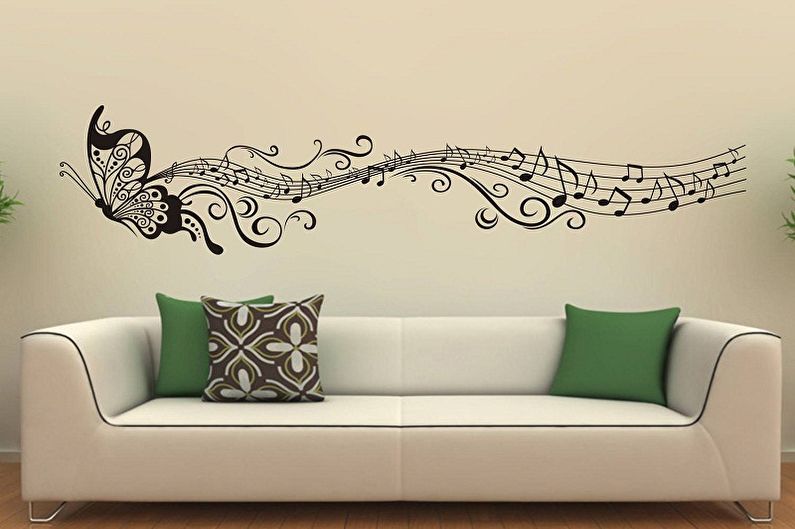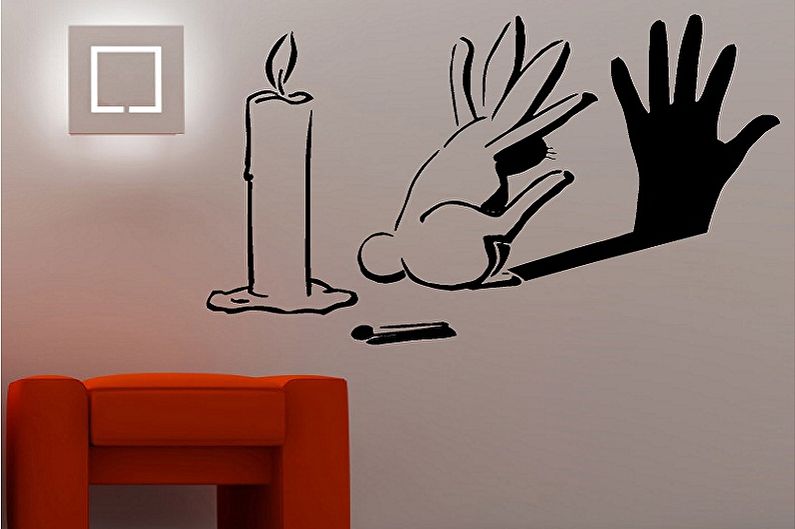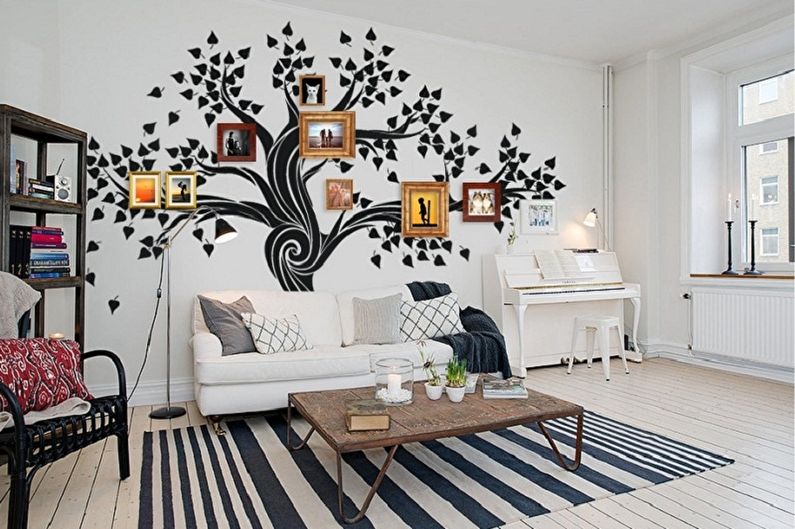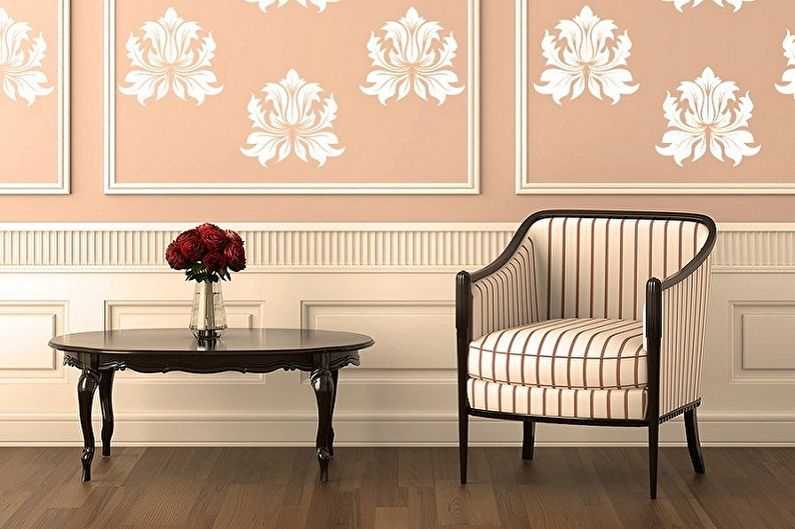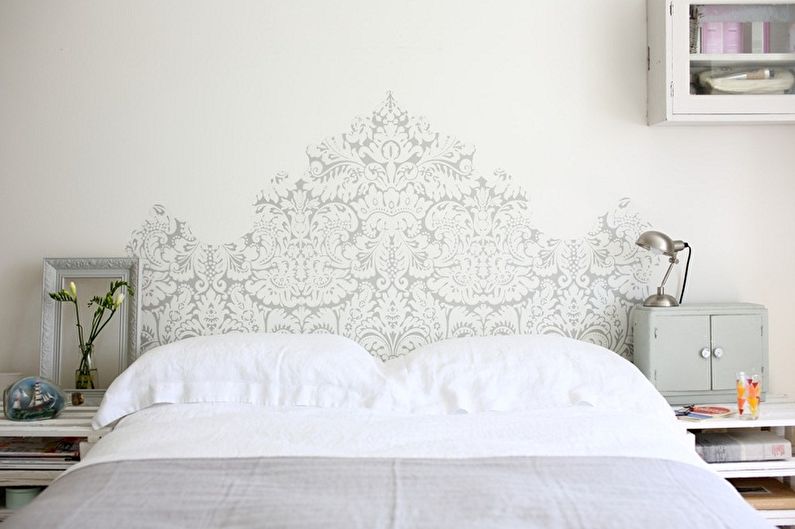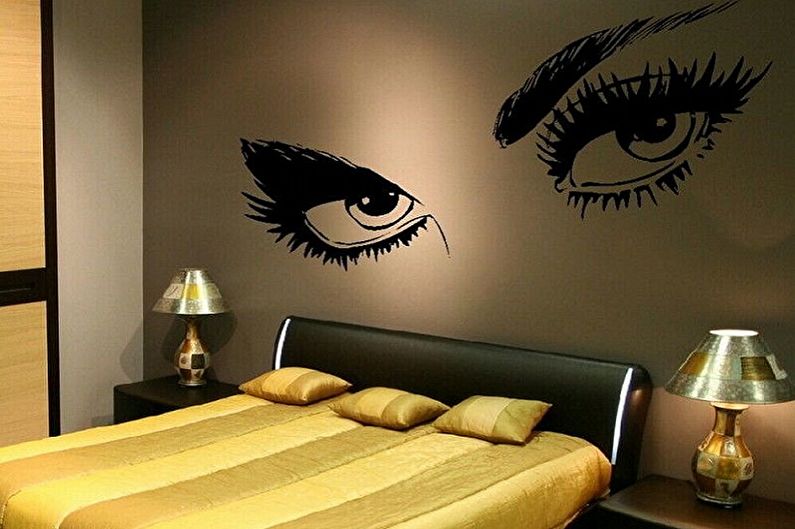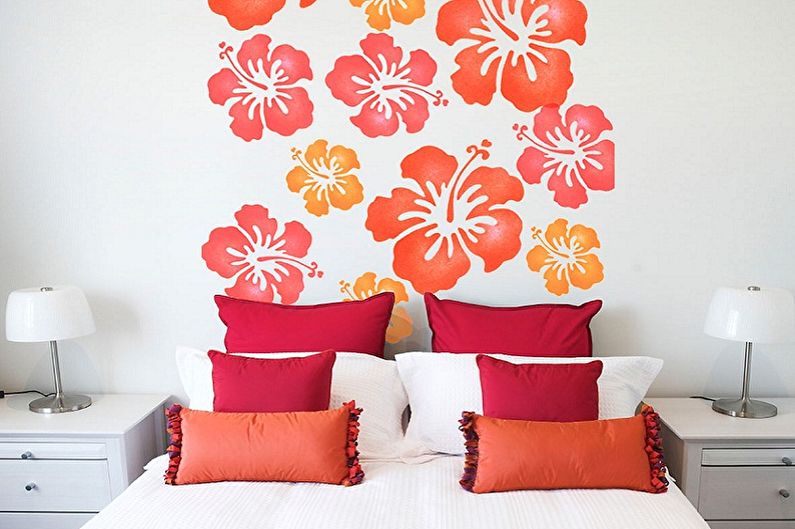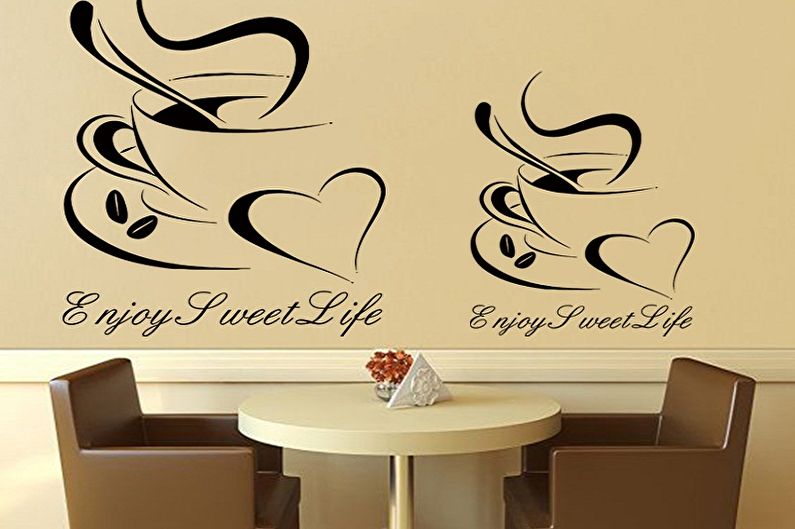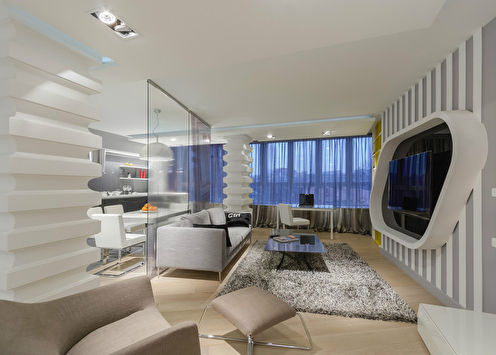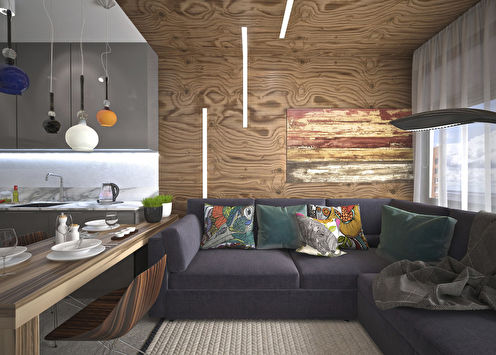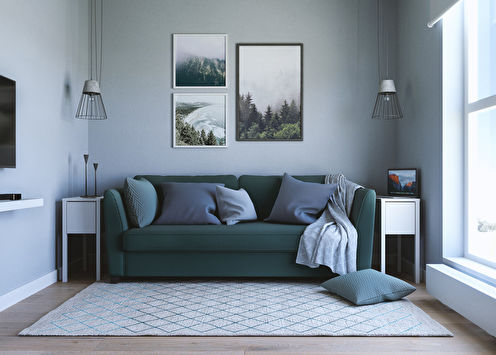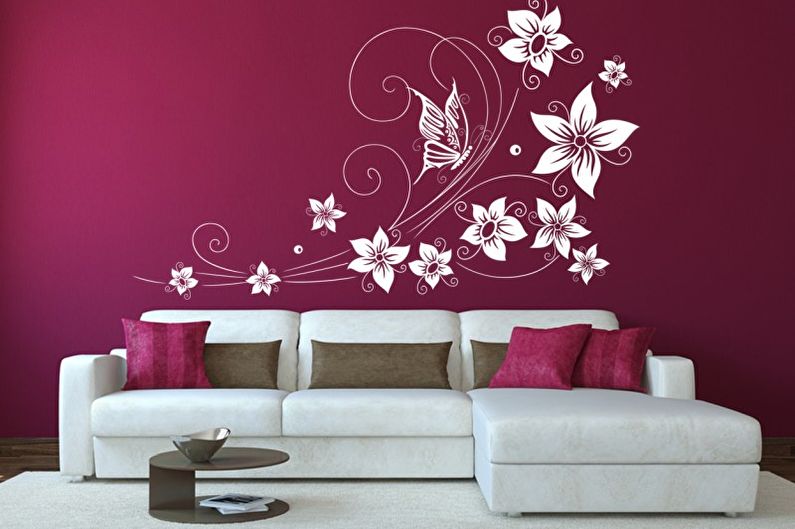
The desire of modern interiors for minimalism increasingly involves the design of smooth plain walls, painted or pasted over with wallpaper. However, “bare” surfaces can get bored over the years, and one of the best options for decorating them is using drawings made using stencils. They are able to decorate any environment and do not require the owner to have special artistic skills. In our article, we will review various types of stencils, methods of working with them, as well as the possibility of self-production of templates.
Benefits & Features
Drawing patterns using stencils is the most affordable way to create wall decorations, which today has gained great popularity. It has many advantages when compared with other types of finishes, for example:
- Screen painting allows you to decorate empty walls in the shortest possible time, since the technology is quite simple, and anyone can master it;
- Using images, you can adjust the space, making it visually wider or narrower, choosing the right pattern;
- By applying images to flaws that occurred during the repair or during the operation of the premises, you can easily mask them;
- This is an easy way to make a novelty in the interior without starting a global renovation.
Creating a decor with screen painting does not entail large material costs - you only need to purchase paint, simple tools and, in fact, stencils. If you can make patterns yourself - this will further reduce the cost of such decoration.
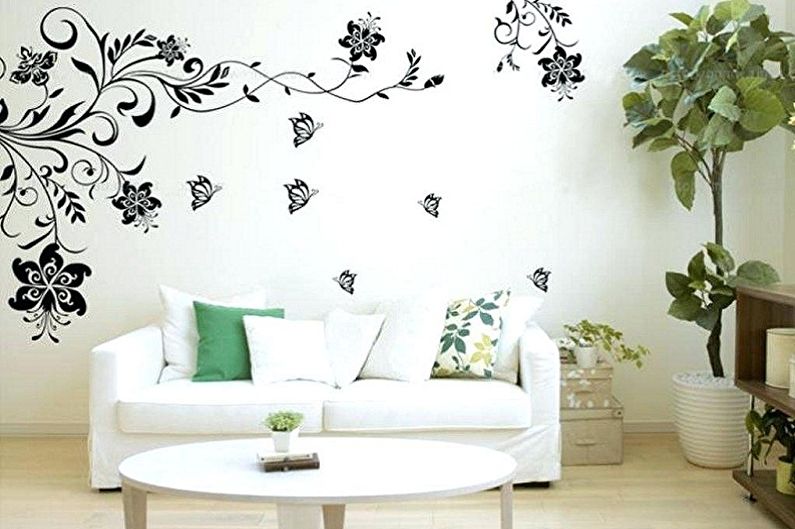
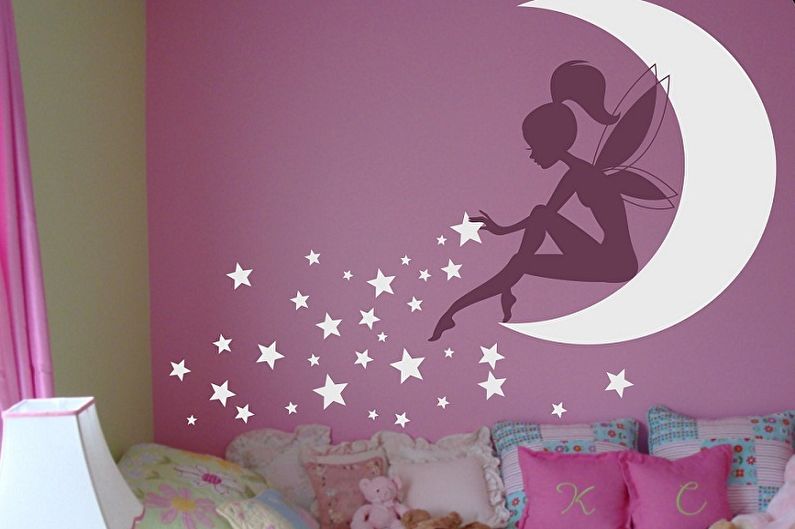
Types of stencils for walls for painting
To date, on sale you can find various types of stencils. Moreover, they differ not only in drawings and sizes, but also in the materials of manufacture, as well as the features of the application. Let us consider in more detail the main types, dividing them conditionally into several groups - such a review will help to choose the right stencil for a particular case.
Depending on the application method
An assortment of stencils allows you to choose the most convenient template for creating both the most primitive and voluminous images. There are types such as:
1. Simple stencils. This group includes stencils designed for simple drawings, the creation of inscriptions, ornaments, patterns, silhouettes. Beginners in this business should start with just such stencils.
2. Stencils for color drawings. Such patterns are considered combined, as they allow you to create colorful images. The technology for working with stencils is a bit more complicated than in the previous case, however, having mastered it, you can create wonderful pictures and compositions. In this case, the stencils are applied in successive layers.
3. Volumetric stencils. To create a spectacular embossed pattern, you will have to work hard. Here you can not do without putty, with the help of which the necessary volume will be created. It must be applied with a layer of at least 3 mm, and then painted.
4. Contour stencils. This type of stencils involves painting not the inside of the picture, but the outer borders. A stencil is a canvas of a certain shape, working with which, you can create various patterns and drawings, outlining the contours.

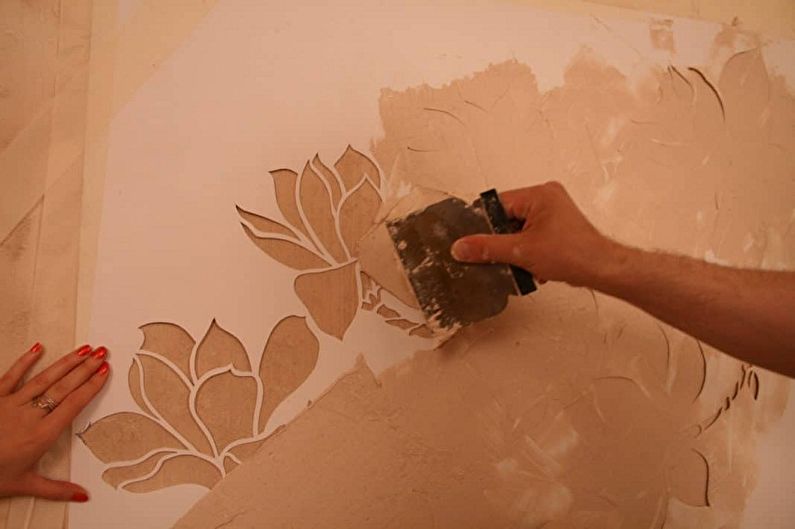
Depending on materials
The choice of stencil material is also no less important, since the durability of the template will depend on this. Based on this, stencils are conditionally divided into disposable and reusable. The simplest are disposable templates that are made of oracal (vinyl film).This material is not moisture resistant and quickly deteriorates. The advantage can be called the presence of an adhesive surface, which allows you to easily fix the stencil on the wall during the application of images. Reusable include acrylic and plastic patterns. They are not afraid of moisture, they will last quite a long time, therefore, the purchase of such stencils will lead to cost savings in the future.
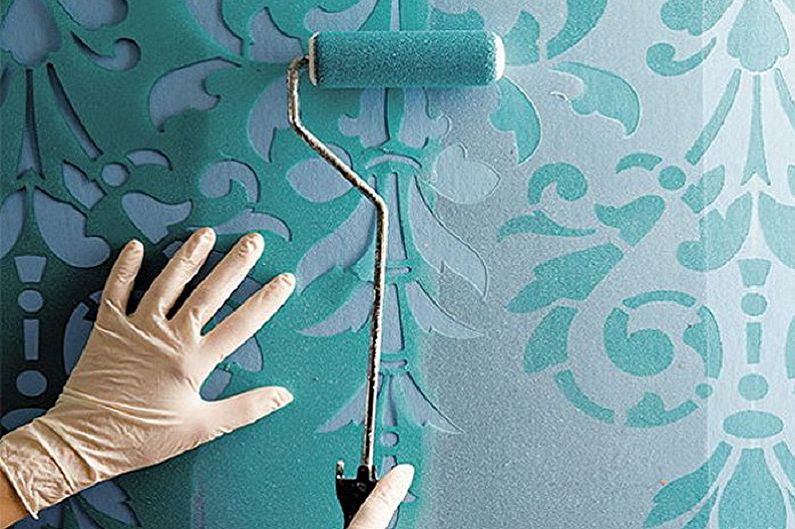
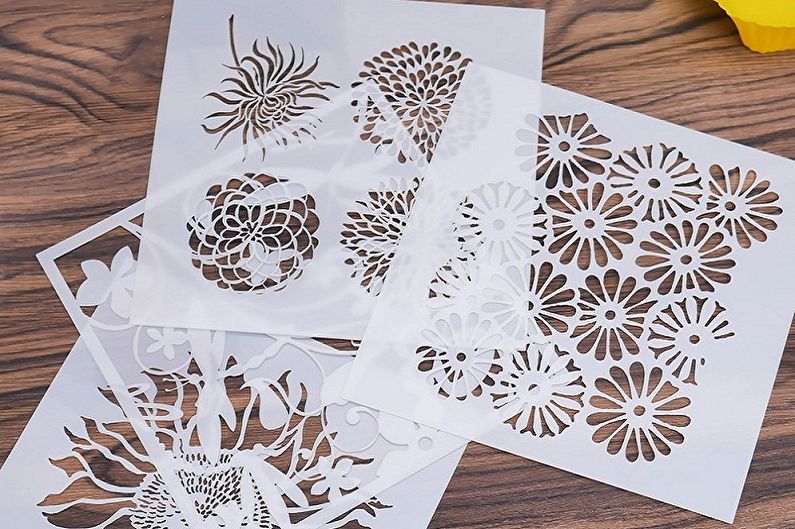
Depending on the room
Drawings made using stencils can adequately decorate any room. Most often they are placed on large, furniture-free walls. A good solution would be to apply drawings in the field of switches, where they will well mask the traces of frequent operation. Graceful pictures in the interiors of the hallways look original, where due to the small area it is often difficult to place the overall decor elements.
For a children's room, the theme of the picture is selected depending on the gender and age of the child. Kids will surely like the images of cartoon characters, while older boys are more impressed by sports themes. Girls are close to the world with princesses and charming fairy-tale fairies who will create a magical atmosphere in a girl’s nursery. It is quite possible to involve the child himself in drawing simple images - such work on decorating his own room will bring him a lot of pleasure and provide the first skills in decorating.
The interior of the bathroom can be supplemented with drawings on the marine theme, drawing images of dolphins, ships, octopuses, etc. Comic plots look quite interesting here, which significantly improve mood during the adoption of water procedures.
In the kitchen, images related to food, products and cooking processes will look best. It can be a cup of aromatic coffee, images of dishes, shelves with seasonings, fruits, beautiful ornaments, graceful flowers, etc. They decorate work areas above the apron or walls near dining tables.
Peace and tranquility should reign in the bedroom. There is no place for comic collages on the walls and dynamic drawings. It is better to choose a stencil with natural motifs, landscapes, ornaments at the head will look great. Since this room is most often hidden from visiting guests, its decor is designed only for the owners, therefore, romantic inscriptions with confessions, images of hearts, angels, etc. will not be out of place here.
And finally, the living room. The drawing for this room must be selected according to the general style of design so that the image looks as harmonious as possible. Most often here you can find images of representatives of flora and fauna, portraits of celebrities. Patterns and ornaments often decorate wall panels in the area of a TV or soft sofa.
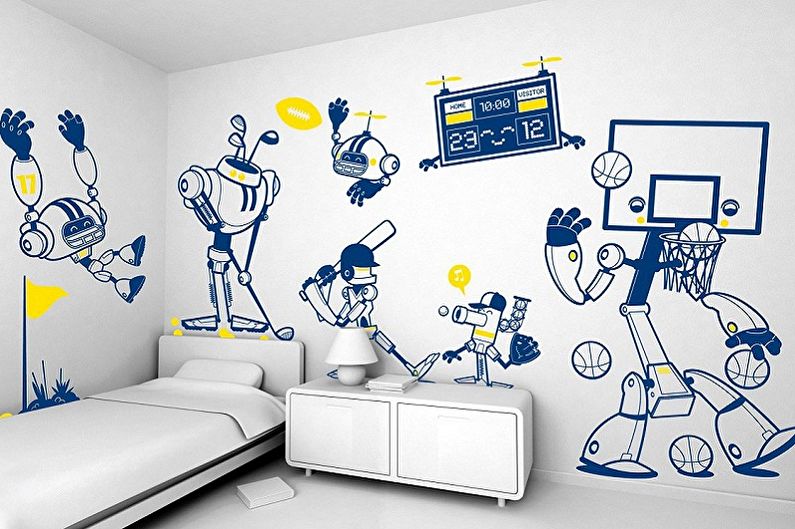
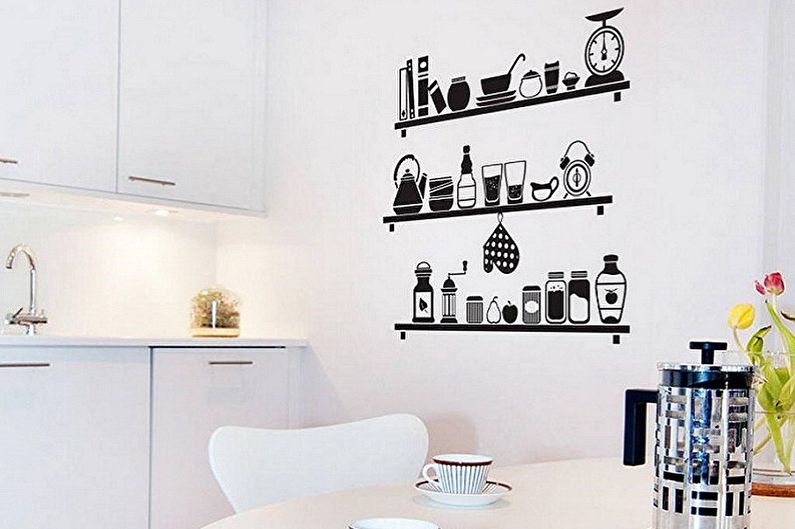
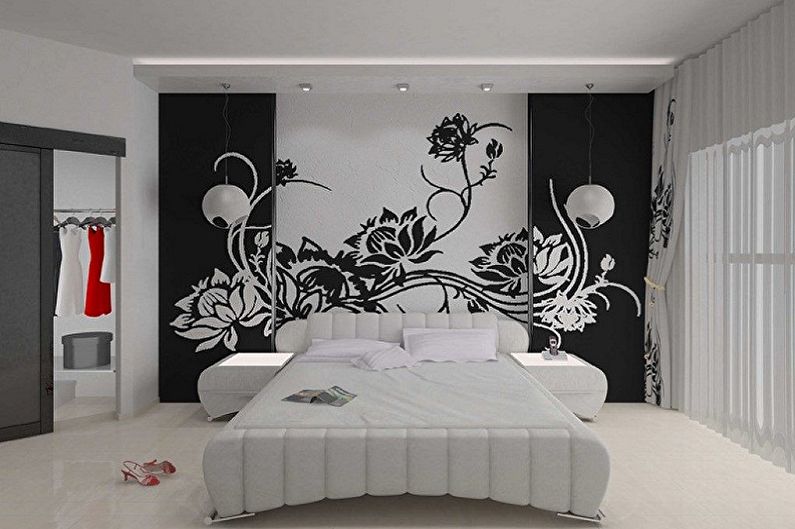
How to work with a stencil
Having decided on the screen painting in his home, the first thing to do is to prepare wall surfaces for such decoration. It is desirable that they be absolutely even and the applied masterpiece does not have errors. It is also necessary to eliminate possible contamination from surfaces. If the walls have undergone wet processing during preparation, it is necessary to allow them to dry thoroughly. Next, we prepare templates, paints and tools for the job. You can apply a drawing in different ways, the choice of which often depends on the size of the image. For this purpose, you can use a roller, brushes, sponges and aerosol cans. Acrylic paint is best suited for work, as it is perfectly applied to concrete and brick surfaces.
Those who started this work for the first time, it is advisable to initially mark the walls into squares - this will avoid the curvature of the images. When everything is ready, we attach the template to the wall surface with tape (if it is not made of oracal).It does not hurt to hold him during work so that he does not accidentally shift. Layers must be applied very carefully so that smudges do not form. If you use the combined method of drawing, each subsequent layer lays down after the final drying of the previous one, sometimes a dryer is made to speed up the process.
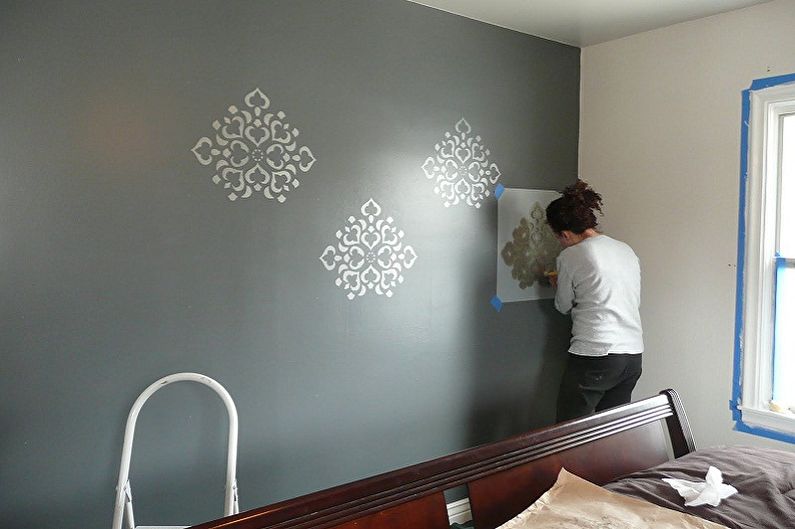
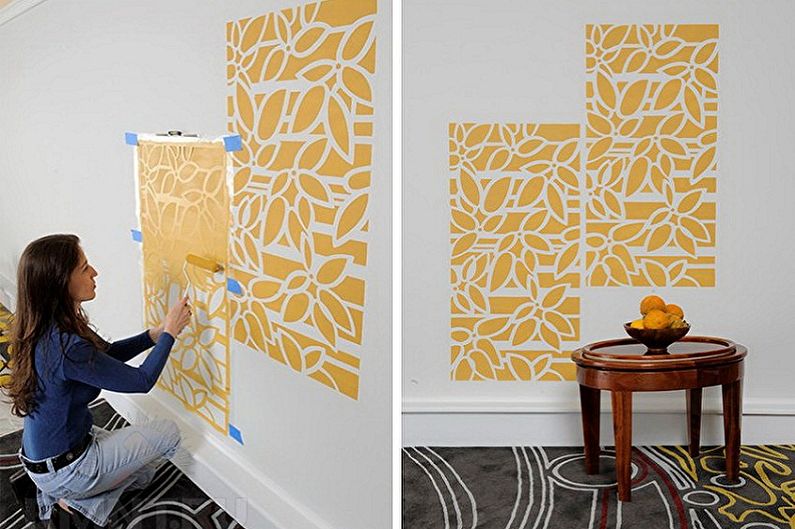
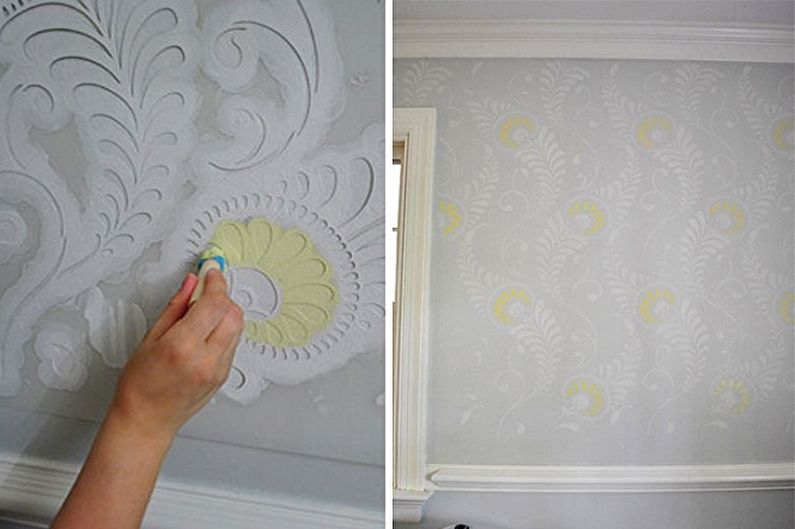
DIY stencils for walls
To make a beautiful template is a painstaking task. You can create an image yourself or take it from any information sources - books, the Internet. If you do not have artistic skills, a sketch can be downloaded from the expanses of the World Wide Web and printed on a printer. Then it must be transferred to the stencil base. If such will be cardboard, you will need carbon paper, with which it is easy to transfer to the base all the details of the picture. Before work, it is important to ensure that the carbon copy is located with the ink side down and the matte side up.
Since cardboard is quite unstable to moisture and coloring compounds, it is better to use a film. In this case, the drawing is much easier to transfer: just put the film surface on the picture and outline the contours. Then, using a sharp knife, it is necessary to carefully cut all the details. Stencils for walls for painting, made by yourself from the film, will last much longer.
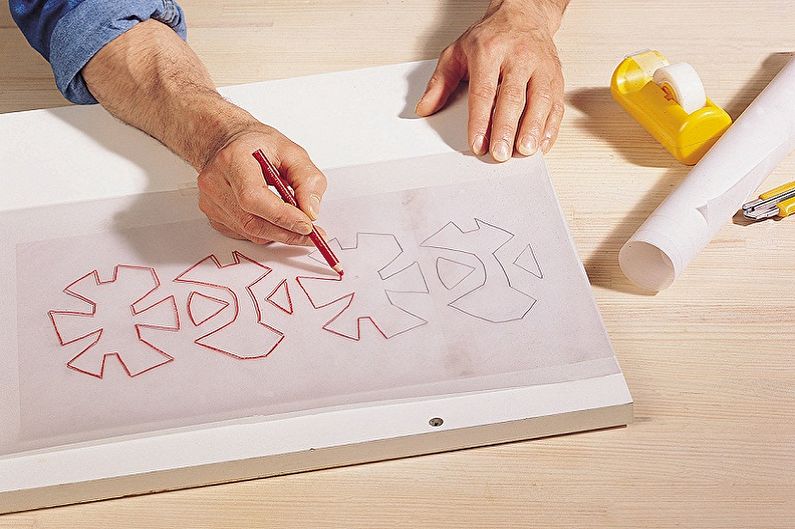
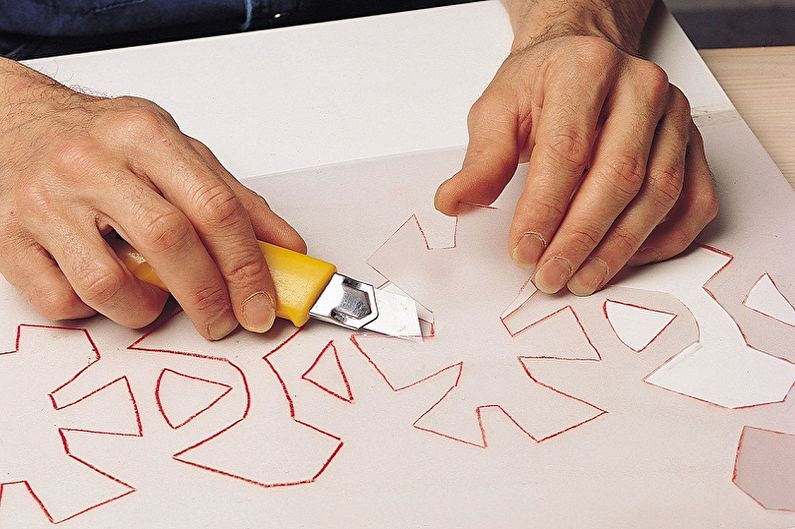
Stencils for walls for painting - photo
In conclusion, we suggest that you familiarize yourself with how stencils for walls for painting are able to transform the interior of a room. In the photo you will see many excellent solutions using different techniques and materials. Enjoy watching!
